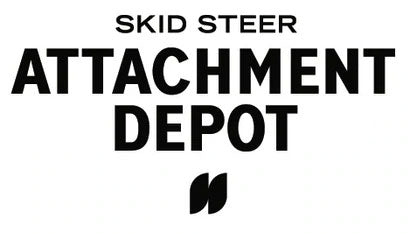Does My Skid Steer Need Snow Tires?
Unless you decide to head way down south when the cold weather comes, chances are you will still need your skid steer in the winter months. Especially those of us living way up north in the land of snow and ice where a change of tires for your skid steer may come with the season.
Let’s take a look to see if you need snow tires and when you might consider investing in a set. Of course, if you’re skid steer is tracked, then please feel free to skip over to the next blog.
Why You Need Snow Tires
Just as you need different shoes in the winter, so does your skid steer. Tires, that is - not shoes!
Simply put, standard skid steer tires aren’t made to handle the colder months. Snow tires can grip the surface and allow your skid steer to cut through snow more efficiently. Standard tires slip and spin when used in the snow. In order to avoid sliding into a garage or other structure and having to pay for the damage, grabbing a set of snow tires might be a good idea.
In wintry conditions, operating a skid steer can be tricky. And the last thing you want is a job to take longer than it should or for your work to be less efficient. Luckily, snow tires improve your skid steer’s performance because they have more traction, which grips the ground’s surface better than standard tires. In fact, snow tires double the amount of traction your machine is able to have.

Snow tires improve your skid steer’s performance because they have more traction, which grips the ground’s surface better than standard tires.
When You Need Snow Tires
For optimal performance, a skid steer should have standard tires in the summer and spring seasons while having snow tires in the winter - especially if you live in an area that receives a lot of snow or ice. The bottom line - you shouldn’t be using either tire year-round.
Why Are Snow Tires Better?
Standard skid steer tires have more cushion, resulting in less traction. Using tires with less traction in the snow can make your machine slip and slide on the surface you’re trying to plow. Luckily, snow tires don’t spin in the snow. Because of this, they have been proven to last longer than standard tires, on average, about 3 to 5 seasons.
So why do these differences matter? The point is that using standard tires in snow will slow you down. You’ll be less productive and use more time than necessary. Snow tires will allow your machine to cut through snow faster and push snow further - cutting your work time in half.
The Type of Snow Tires You Might Need
When looking for a good snow tire, you want to pay attention to the width and tread. When tidying up a wintry mess, snow tires get the job done more efficiently because they’re narrower. This smaller width allows for better pressure against the ground - leading to better traction. The tread pattern is equally important and allows for the best grip on whatever surface you’re plowing - thus maximizing your productivity.
It’s important to pay attention to specific tread patterns when looking for snow tires. Look for tires resistant to hydroplaning, have good handling, and are ideally made for use in snow.
A tread pattern to be on the lookout for is a directional tread. This tread is made for snow use and resists hydroplaning by scattering water throughout the tread of the tire. The design of a directional tread tire allows it to have extra traction. This is because the tires are designed to move forward with the direction of the tread. An asymmetrical tire tread pattern is also a solid choice. Rather than the tread pattern pointing forward, this tire has a different footprint on the inner and outer halves. The inside is responsible for hydroplaning water, while the outside handles gripping surfaces. While these aren’t specifically designed for snow, they are made for use in wet conditions.

This tread is used in snow and resists hydroplaning by scattering water throughout the tire's tread.
Just as the tread pattern is important, the width of your snow tires matters just as much. When looking for tires, finding some that are narrower is the better option. Standard tires have a width of 10”-14”, while snow tires are closer to 7”. If you do some quick math, this is why snow tires double the ground pressure - they tend to be half the width of the standard version. If you want to remove snow fast, grab a tire about 7” in width.
The time of year and weather conditions will determine if you need snow tires. While standard tires are great for sunny days and dry ground, you will have a more productive day using snow tires in wintry conditions. The bottom line - they’re a lot more efficient than standard skid steer tires and will increase your productivity.




